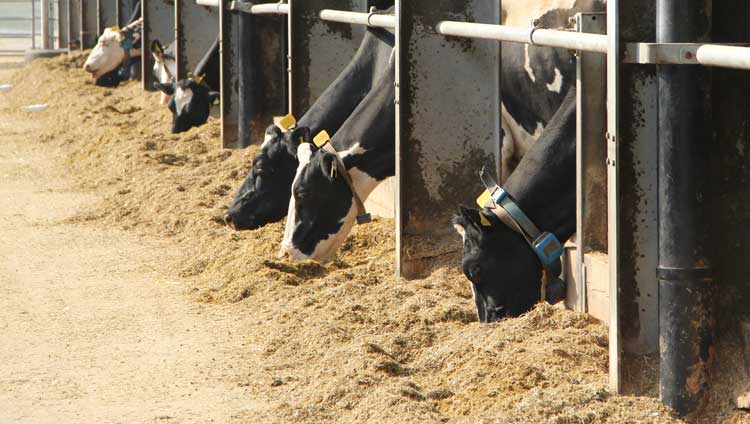Feed efficiency drive puts yeast efficacy under the spotlight
Published Thursday, 12th April 2018
With milk producers continuing to look for opportunities to increase margins, the role of yeasts in improving rumen function and feed efficiency is increasingly under the spotlight.
But not all yeasts are the same, warns Dr Derek McIlmoyle, AB Vista EMEA Ruminant Technical Director, and care is needed if the returns are to outweigh the additional cost.
“Correct yeast choice is critical if the money spent is to be reliably converted into better margins,” he explains. “The challenge is that yeasts can differ markedly, so it’s vital end users understand the factors that determine efficacy.”
All yeasts act by promoting the activity of beneficial microbes in the rumen. This is done either directly, by providing an additional food source for the beneficial populations of microbes and competing against the undesirable populations, or indirectly via improvements in the rumen environment.
“The cell walls of most yeasts used in ruminant diets, whether live, dead or just cell fragments, can act as a food source and bind pathogens, as well as stimulating the cow’s immune system,” Dr McIlmoyle continues.
Alive and active
“But removal of excess oxygen to help maintain good anaerobic conditions, and the competition for sugars which limits lactic acid production, can only happen if the yeast is alive and metabolically active in the rumen.”
The number of colony forming units (CFU) contained in a single ‘dose’ is also important, and can range from as low as 10 billion up to 50 billion CFU. Also vital is the survivability of those live yeast cells, from the point of production through to the time they spend in the rumen.
“Most early generation yeasts were by-products of the baking industry, but the latest strains are screened specifically for survival and activity in the rumen,” adds Dr McIlmoyle.
“And remember that although yeasts can have some effect on rumen pH, they’re most effective when rumen pH is already close to optimum. For example, trials combining a live yeast with a slow-release rumen conditioner have shown feed efficiency gains of up to 3% compared to using a yeast alone.”
FEATURED CONTENT
AB Vista launches online dietary fibre calculator to help nutritionists optimise animal diets
AB Vista supports customers’ sustainability programmes with emissions reporting service
Stimbiotic product Signis’ effectiveness in pig diets recognised in peer-reviewed research paper
Achieve greater feed cost savings whilst maintaining animal performance by targeting maximum nutrient utilisation
Sign up for AB Vista news
A regular summary of our key stories sent straight to your inbox.
SUBSCRIBE© AB Vista. All rights reserved 2023
Website T&Cs Privacy & Cookie Policy Terms & Conditions of Sale IDC Policy

























